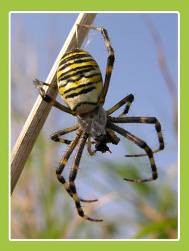OTHER ANIMALS
I thought I saw a hummingbird – can this be true?
| People often report to us what they think is a hummingbird in their garden in late summer, but are surprised to learn that it’s a rather unusual moth, the hummingbird hawk moth (Macroglossum stellatarum), an immigrant from the Mediterranean region. They are day flying moths with a wingspan of about two inches so hard to miss if you have got one flying around. Like a real hummingbird, the moth beats its wings so rapidly that they produce an audible hum and are seen only as a haze. Hummingbird hawk moths are expert hoverers and dart from one flower to the next in search of food completing the illusion of a hummingbird. The late summer peak in numbers of hummingbird hawk moths is largely the result of emerging locally raised moths, most of which are unlikely to survive the winter. It is attracted to flowers that provide a plentiful supply of nectar, such as red valerian, honeysuckle, jasmine, buddleia, escallonia, petunia and phlox. |  |
I’ve seen an unusual spider – is it dangerous?
 | Probably not if you saw it on the Isle of Wight. Despite scary tales of foreign spiders marching on the South Coast, there are no dangerous spiders confirmed to have become established on the Island, and all native British spiders are harmless to humans. If you have seen a big, yellow and back stripy spider on long grass in late summer, it is probably the Wasp Spider Argiope, a harmless and spectacular local speciality. |
I’ve seen a deer on the Island, should I report it?
There are no naturally occurring deer on the Island although a few occasionally escape from private collections. We are interested in sighting of these animals as, if they establish a wild breeding population, this could affect the Island’s unique balance of biodiversity. So if you do see a deer, or find evidence of one, please do let us know.
Page last updated on: 04/11/2010





